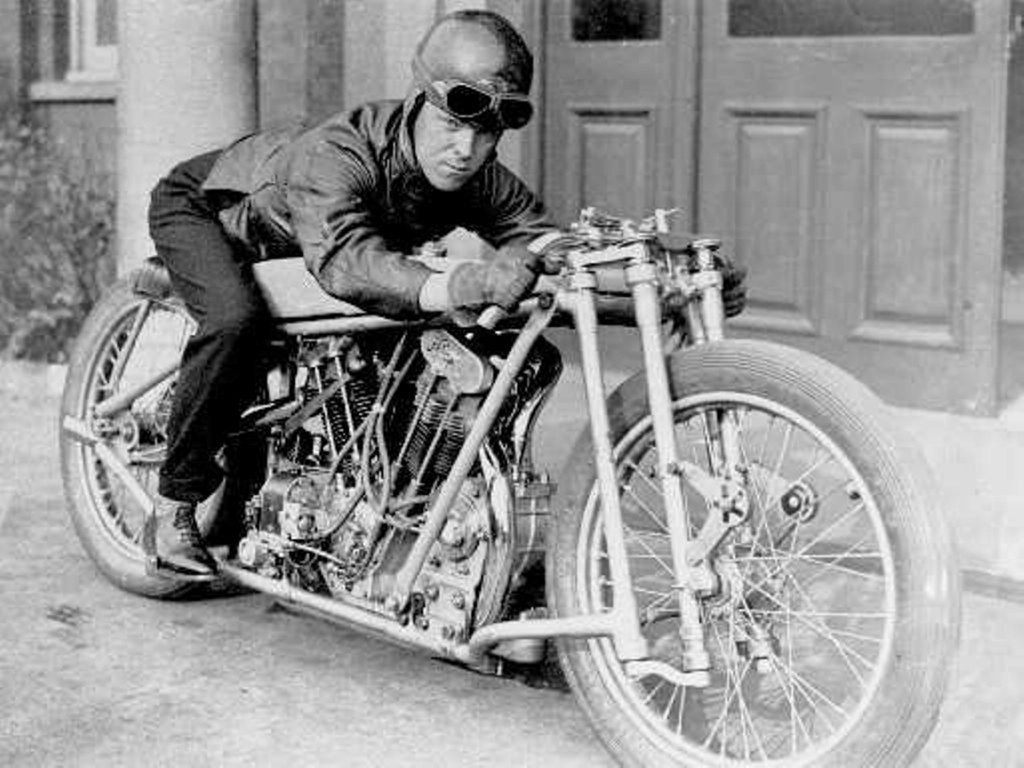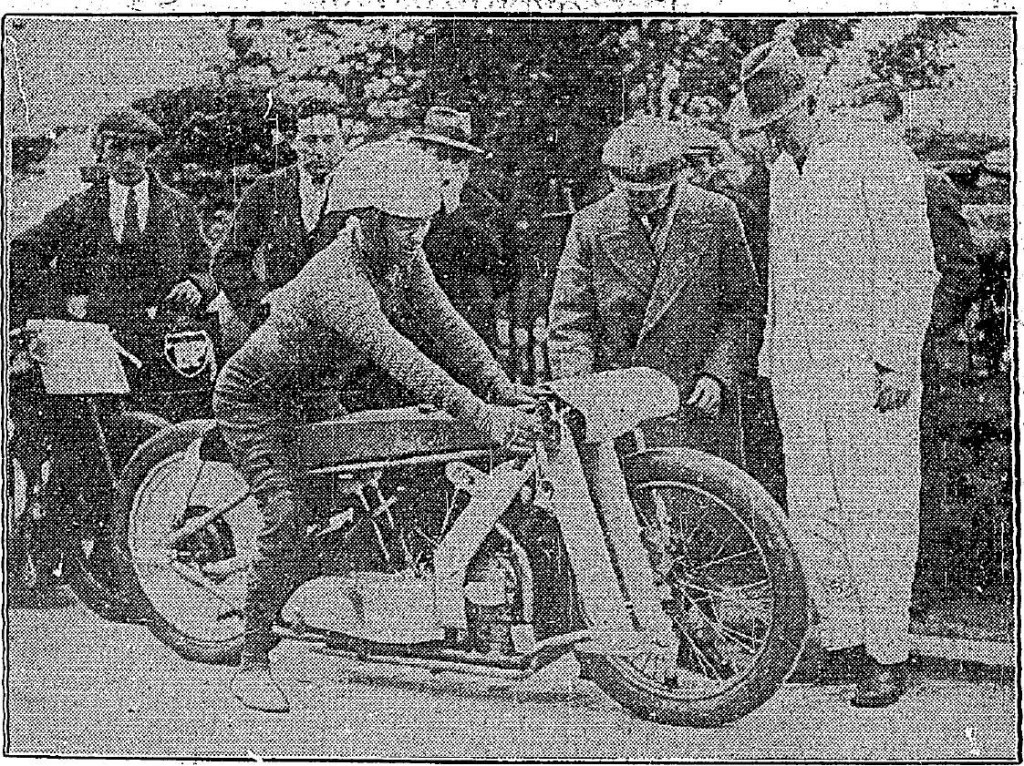
Kieran’s Our City, Our Town,
Cork Independent, 17 March 2011
In the Footsteps of St. Finbarre (Part 251)
The Wright Record
“A new world’s motor cycle speed record of 150.74 m.p.h was set up by J.S. Wright, the British Rider, on the Cork Carrigrohane Road yesterday. This speed beats the record of 137.61 miles per hour made in September by the German rider, Henne. The road has been pronounced the fastest road in Great Britain or Ireland” (Journalist, Irish Independent, 7 November 1930, p.9).
In a historical sense the Carrigrohane Straight Road, since its creation in the nineteenth century, has always played a key part in the life of the city. In the 1930s, it was well known for its motor cycle speed records and the Cork Motor Car Races of 1936-1938. The first major attempt to harness the two and a half mile concrete road for creating speed records was for a motor cycle speed meeting in 1929 at which speeds of a hundred miles per hour were attained. The first fastest motorcycle record was set unofficially by Glenn Curtiss in 1903. The first officially-sanctioned Fédération Internationale de Motocyclisme record was not set until 1920. In mid 1930, Joseph Wright of Britain lost the motor cycle speed record to Jacob Ernst Henne (BMW) of Germany. Later that year, plans were made to retake the record. The 1930 Motorcycle Exhibition at Olympia, London was coming up in the second week of November 1930 and it was generally felt it would be good for business if a British machine could regain the record.
English motor cycle manufacturers had held a monopoly of the world’s speed record for many years in the early twentieth century and there was consternation in English trade and sporting circles when the German rider Henne deprived England of the honour. J.A. Prestwich Industries was one such prominent English motor cycle manufacturer, which wished to provide an engine for the new record. Named after its founder John Alfred Prestwich (from Tottenham), the company produced cinematographic equipment, internal combustion engines (for which the company was generally abbreviated to “J.A.P.”), and other examples of precision engineering. Their engines were used in many famous motorcycle brands and other devices, such as early aeroplanes, chainsaws, and cultivators such as those produced by Howard Rotovators, and light rail maintenance trucks. During the Second World War J. A. Prestwich produced around 240,000 industrial petrol engines in support of the war effort, together with millions of aircraft parts, fuses, etc. Their motorcycle engines were associated with racing success and were still used in speedway bikes well into the 1960s.
A few days before the London Motorcycle Exhibition in early November 1930, the Cork and District Motor Club directed the organising bodies of the new record attempt by British interests to the Carrigrohane Straight Road. The road had a fine surface because of receiving an excellent cement surface in 1927. Joseph S Wright, one of Great Britain’s foremost motor cycle racers came to Cork to attempt a new record. French officials arrived in Cork with special electric timing apparatus. Lieutenant-Colonel Crerar was director of the test. The first attempt was on 5 November 1930 but was postponed owing to continuous rain and greasy conditions on the road. The trial took place the following day.
Joseph Wright rode a 1,000 cc Q.E.C. Temple J.A.P-engined machine and regained the record by clocking up at just over 150 miles per hour. Appearing in a British Pathé movie (http://www.britishpathe.com/record.php?id=4434), his clothing was strapped down to cut back on wind resistance. He even had tape put around his throat. He wore a streamlined motorcycle helmet. The film shows shots of the bike being towed behind a car to get up to starting speed.
The West Cork Motorcycle Club in their historical research notes that the bike was built by Claude Temple who had himself already broken the speed record for motorcycles in about 1927. It featured a supercharged 998cc V Twin JAP engine and front forks to the OEC patented design. They argue that there was a controversy at the time in which it was claimed the bike had in fact broken its engine on the first run and the record run was actually made on the back up Zenith-JAP. No one seems to be sure. The manufacturing of the Claude Temple company ended due to the Second World War Allied bombings, which devastated the factory forcing them to cease production. With out the capital to get the factory fully re-opened, the manufacturing totally ceased in 1954.
The Lord Mayor Frank J. Daly hosted representatives of J.A Prestwich and Co. Ltd and Joseph Wright at a dinner on the night of the record feat. In his address, he noted that “the government of the Free State was most anxious to foster and cater for anything that would help the Saorstát to keep its place amongst the nations of the earth”.
As for the record, it was retaken by the German Jacob Ernst Henne two years later in Hungary. Between 1928 to 1937, he achieved a total of 76 land speed world records, the last on November 28, 1937 with 279.5 km/h (173.7 mph) on a fully-faired 500cc supercharged BMW. This record stood for 14 years.
To be continued…
Captions:
582a. Joseph S. Wright, 1933 in Lancastershire (source: Boole Library, UCC)
582b. Preparing at the Carrigrohane Straight Road on 6 November 1930 (source: T.W. Murphy)
